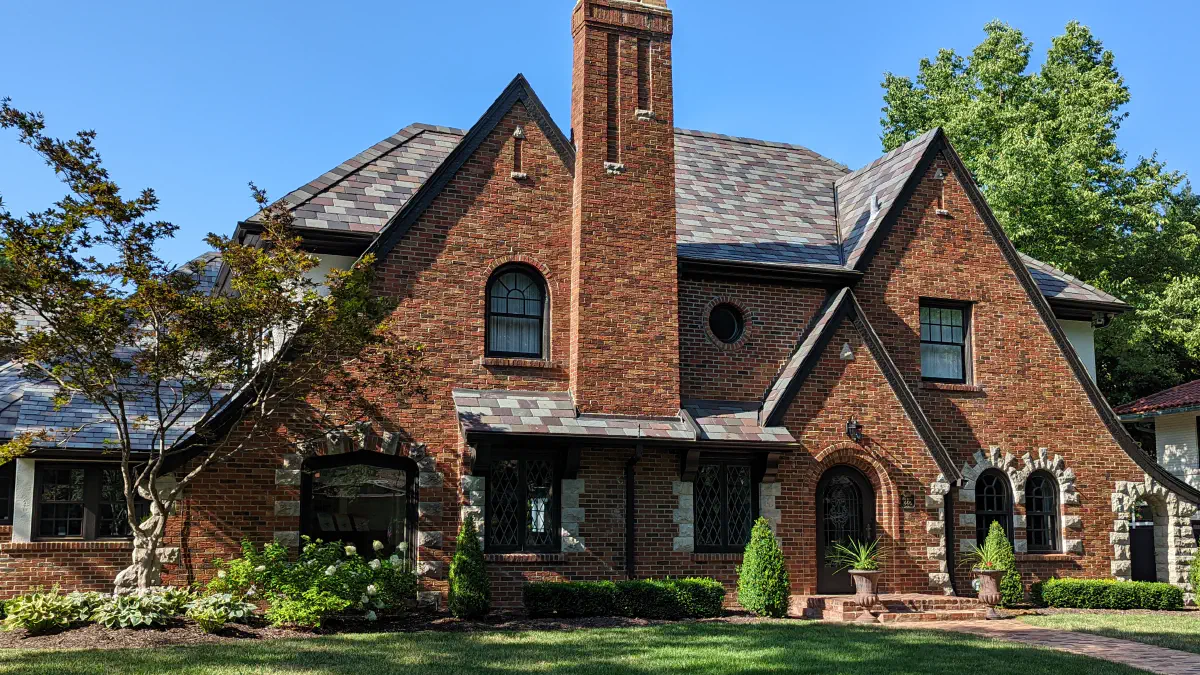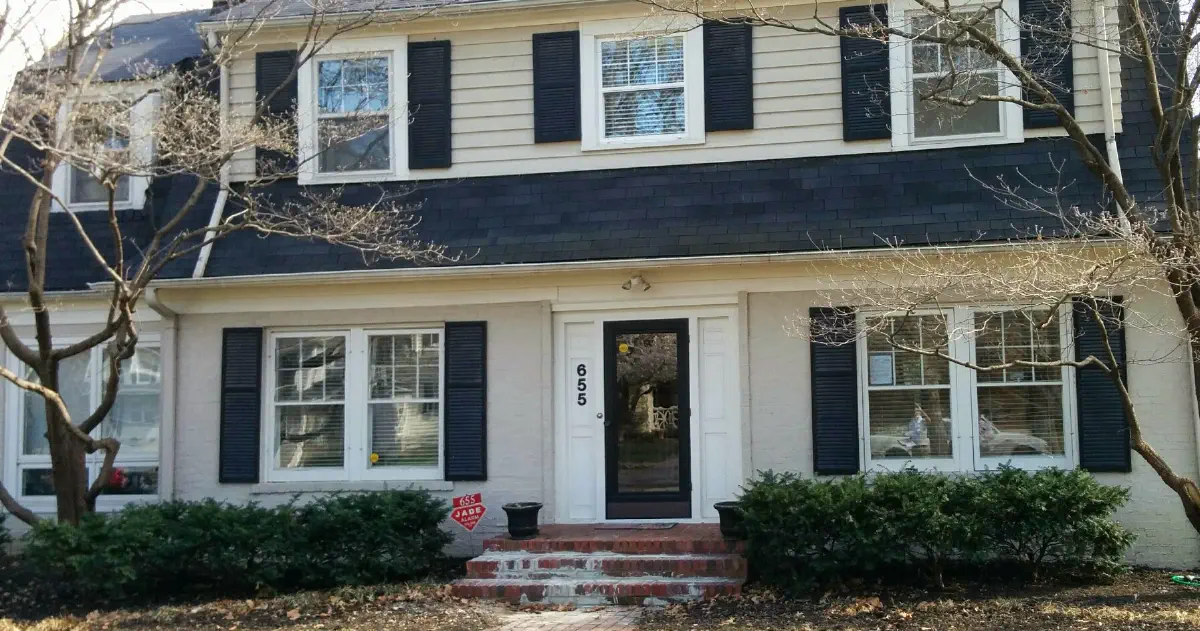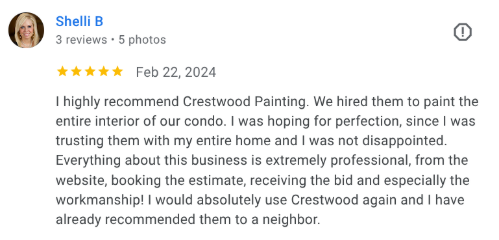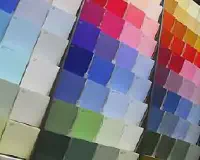The color and tone of your roof can have a surprising impact on how your house reads from the curb.

Why Roof Color Matters in Exterior Paint Planning
Your roof is part of your home’s color palette—even if it’s not the part you were planning to paint.
Most homeowners focus on siding, trim, and door colors—but overlook one major design element: the roof. While you may not be repainting your shingles, the color and tone of your roof can have a surprising impact on how your house reads from the curb.
When all elements work together—from the top down—it shows. And it lasts.
Roofing is always visible to some degree, and often takes up a substantial visual footprint. Ignoring it when selecting exterior colors can throw off an otherwise well-planned scheme.
The Roof Is Often in the Picture
From street level, roof shingles contribute to the first impression—sometimes more, sometimes less, depending on the home’s elevation and slope.
On a single-story ranch, the roof is front and center. On a tall two-story home with a hipped roof, it might be less dominant—but it’s still part of the whole picture.
It’s not just the color that matters, but also the surface and material. Historic clay tile roofs, asphalt shingles, wood shake, and slate all reflect light differently—and that affects how adjacent paint colors appear.
Older Roof Colors Can Be Bold
Historic homes with slate or tile roofing often feature strong or unexpected tones.
Clay tile roofs—especially in Mediterranean, Spanish, or Mission-style architecture—frequently have bold terra cotta, rust, or reddish brown tones. These colors create a very warm foundation, and any wall color must work with those reds and oranges.
Slate roofs, by contrast, usually fall on the cool side: grays, charcoals, even soft greens or purples depending on the mineral content. These cooler hues call for a different color strategy entirely.
Historic roofing materials like slate or clay tile often dictate your color direction before you’ve opened a single paint fan deck.
Newer Roofs Aren’t Always Neutral
Suburban asphalt roofs might look beige—but many carry subtle undertones that affect your paint choices.
Asphalt shingles are common in newer neighborhoods and come in a wide range of tones: gray, black, brown, green, taupe, even soft blends of multiple colors. That variation is great—but it can be tricky when matching paint.
Some shingles appear neutral at first glance but lean pink, peach, or purple in full sun. These undertones are hard to see until they clash with your newly painted siding.
Cool Roof Colors vs. Warm Roof Colors
Generally speaking, cooler roof tones pair well with blue-based palettes, while warm roofs look best with yellow or earth-toned paints.
A charcoal roof tends to play well with grays, navy blues, off-whites, and even black. These color families support the cool, clean lines a darker roof often implies.
Brown, gold, or reddish roofs usually benefit from warmth—think taupe, tan, soft olive, or muted ochre. These combinations feel cohesive and natural without being overly matchy.
Subtlety Matters
This isn’t about choosing “brown for brown” or “blue for blue.” What matters are undertones. Complex, layered paint colors that include complementary or harmonizing undertones tend to look best.

There Are No Universal Rules
Every house is different—its shape, orientation, landscaping, and materials all affect how color works.
We’re cautious about giving one-size-fits-all advice. A color that looks fantastic next to a charcoal roof in Brookside might feel flat or washed out on the same roof in Overland Park.
Light, shadow, surrounding greenery, and even the sheen of the paint can all shift perception. What matters is how all these elements come together on your specific house.
Getting It Wrong Can Be Costly
Paint that clashes with the roof can diminish curb appeal and resale value—especially with large surfaces.
Exterior painting is a significant investment, and it covers a lot of square footage. If the color isn’t in harmony with the roof, the house can feel disjointed or awkward—even if everything else is professionally done.
This is especially noticeable with dramatic roof colors, or when a house is painted a trendy new color that doesn’t coordinate with older shingles.
A Good Match Adds Value and Style
When the roof, siding, trim, and accents all work together, the result feels polished and complete.
Even understated homes benefit from thoughtful color coordination. A well-chosen exterior palette enhances architectural features and helps your home sit comfortably in its surroundings.
If you're not sure where to start, our guides on best front door colors and colors interior can help shape your thinking. And if you're doing a broader update, don't forget to dispose of old paint responsibly as you plan ahead.
Book a Quick Estimate
Choosing the right exterior colors starts with a conversation. You can book an estimate at a time that works for you—most meetings take less than 30 minutes, and they come with clear answers, not a sales pitch.



